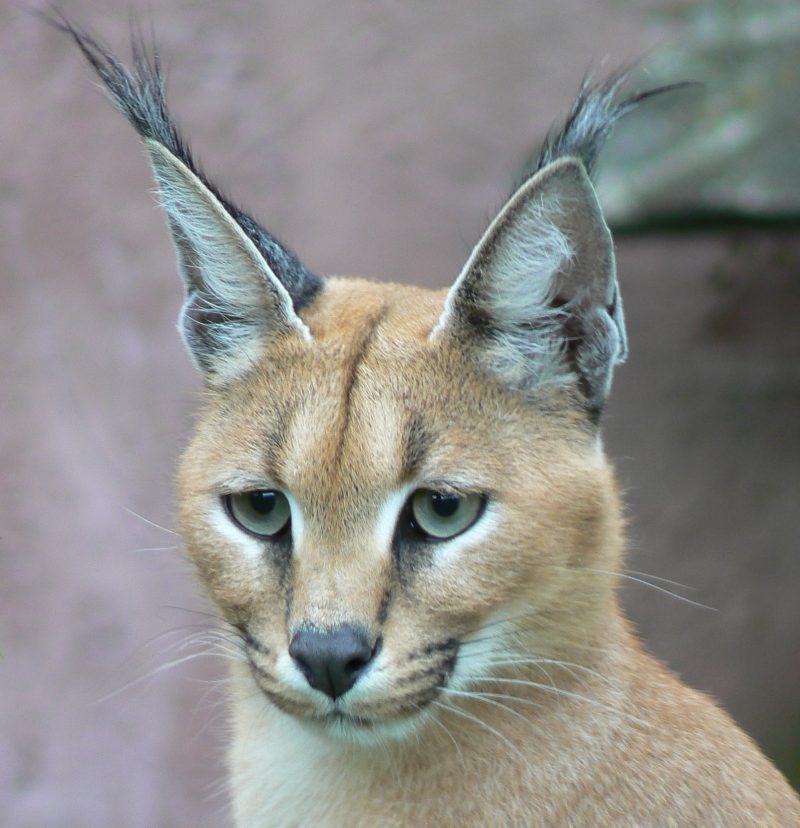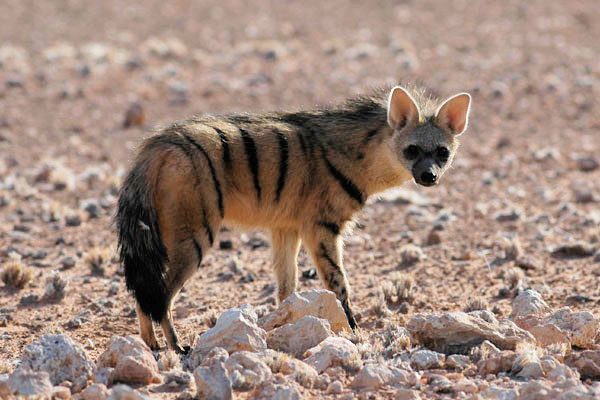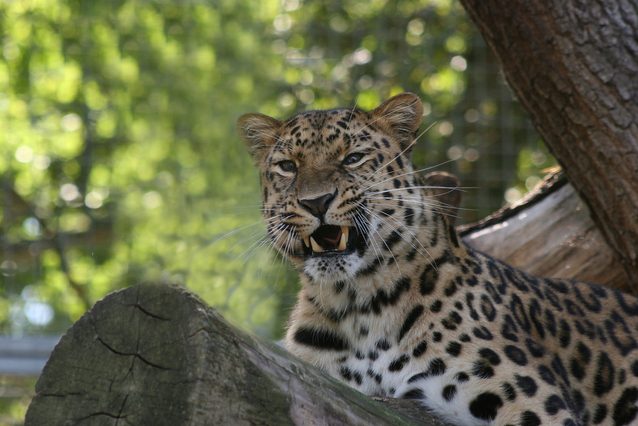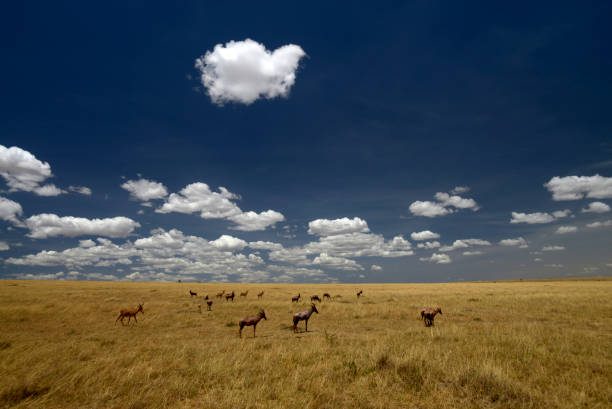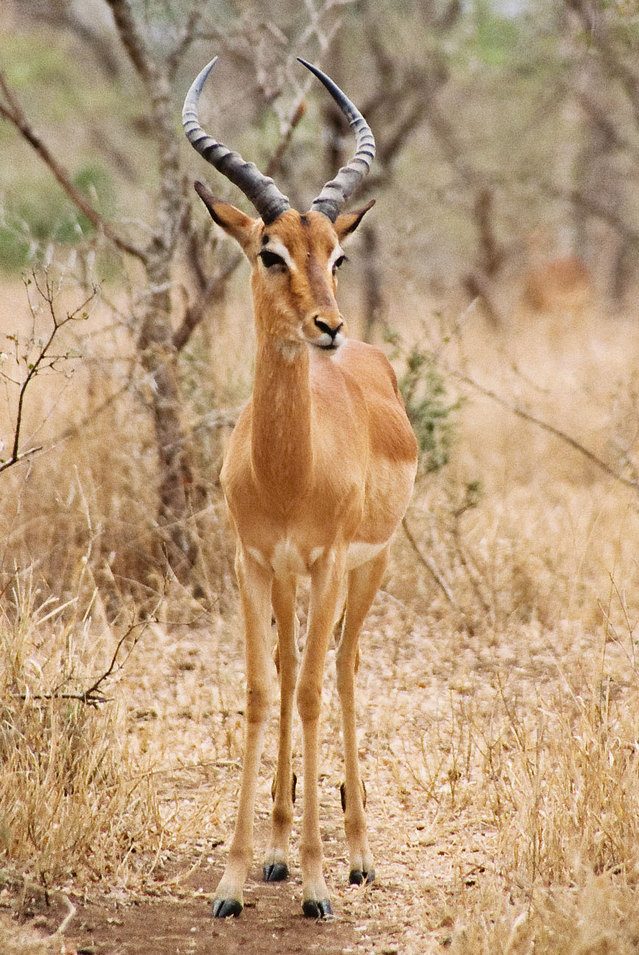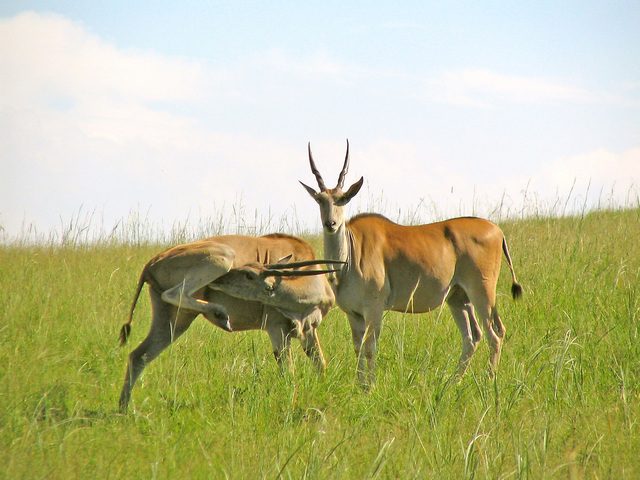The Diverse Wildlife Of Beautiful Kenya
Bird killer caracal
The name caracal comes from a Turkish word meaning black ear. The animals were once trained for bird hunting because they can leap and knock down up to 12 birds at a go. It is the most formidable of Kenya’s small cats and the most prominent member of them. Males can weigh up to 40 pounds and females up to 35 pounds. They stand about 20 inches at the shoulder. Caracals live in the savannah and woodland regions of Kenya and prefer the more arid, scrubby habitats. They will also inhabit montane and evergreen forests. These cats are nocturnal but are also active during daytime in protected areas.
A caracal is a desert lynx which does not possess the same physical attributes, such as the ruff of hair, of the other lynx family members. Instead, it has a dense, short coat, usually tawny-brown. The characteristic that caracals share with the lynx family is the black at the back of the ears.
Caracals are solitary animals. Their social interactions are limited to mating, except for mothers with litter. After a gestation period of 81 days, females give birth to approximately one to four kittens. It takes around ten days for them to open their eyes altogether. They will remain with their mother for a year, attaining sexual maturity by then.
Caracals prey on mammals such as rodents, hyraxes, hares and small antelope. However, they will not hesitate to kill animals larger than themselves too, such as springbok or young kudu. They have also been reported to store their kills in trees. Caracals are notorious for livestock predation due to which human beings kill many caracals. Some bush tribes consider its skin and meat to be a luxury.
Black banded mongoose
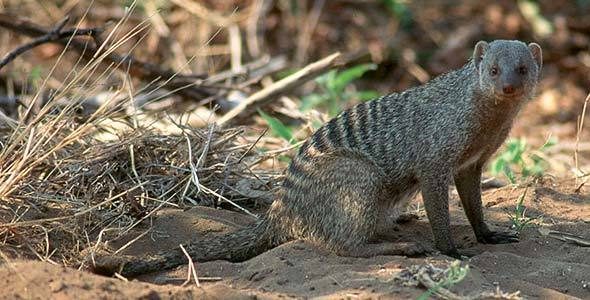
Source: Kruger park
Having a broad habitat tolerance, the banded mongoose inhabit grasslands, woodlands, riverine areas and rugged country. It is considered a small mongoose. Adults reach approximately 600 mm in body length. Tail length is about half the length of the body and head. The banded mongoose is distinguishable by a series of dark bands across the back. The tip of the tail and the feet are also usually black, but the rest of the body matches the color of the fur, which ranges from reddish-brown to whitish, with variation among specimens.
Females become sexually mature at ten months of age. Males may begin forming spermatozoa when they are four months old. She participates in courtship by anal-marking him, or lying on her back and fighting with him, which will make him reciprocate.
Bat eared fox
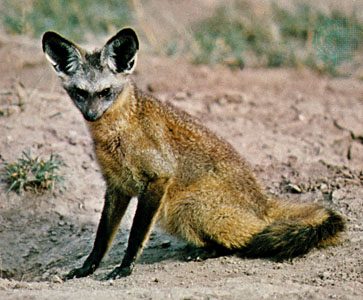
Seen mainly in the regions that are grazed by domestic and wild ungulates, the black-eared fox prefers to lounge in the acacia tree shades and favor short savannah and grasslands. But if threatened, they rush to the dense shrub areas and tall grass.
The bat-eared fox is a highly social animal. They dig lairs that protect them from high winds and extreme temperatures. The male undertakes most parental duties, while the female fetches food. They are relatively common throughout Kenya, and are mostly seen foraging either early in the morning or at night in warmer months and daylight when the weather turns colder.
The pointed teeth of a bat-eared fox enable it to efficiently and quickly chew its meals to help in digestion. Their diet includes invertebrates like ants, termites, scorpions, crickets and spiders. These animals control harvester termite populations, which many farmers consider a pest. They also eat birds, mammals, reptiles and desert truffle. They never drink water as they obtain all the moisture they need from their food. These foxes are the target of carnivores like leopards, lions, cheetahs, wild dogs, and hyenas. Pups are vulnerable to predators such as the martial eagle and the black-backed jackal. Humans are also responsible for a large number of their deaths, as a result of poison and traps intended for predators. Moreover, people hunt them for their pelts. Diseases such as rabies, canine distemper virus and canine parvovirus, as well as habitat loss and drought, are bat-eared fox’s other threats.
Aardwolf
An aardwolf belongs to the hyena family. It is the only member of the subfamily Protelinae and the surviving member of the Hyaenidae. Aardwolf is a dog with the back legs shorter than the front ones. Thus, it has a distinctly bear-like walk and a sloping posture. It also has a mane at the posterior of the neck that is held erect, several black stripes on the legs and body, and less powerful jaws.
The aardwolf lives in areas of land covered with shrubs or stunted trees. Aardwolves are nocturnal and shy. They hide and sleep in burrows all day long and come out only at night for foraging food. They use existing dens of others, despite being able to create their own. Aardwolves often memorize and return to nests so that they can save themselves from the trouble of finding a new nest.
The aardwolf does not hunt its prey. The diet consists of carrion and larvae and particularly termites, with its long, sticky, tongue to collect them. Hence, the primary ecological role of the aardwolf is controlling the termite populations. For humans, this can be very important because termites can be destructive to farms. But aardwolves make sure not to kill the mound or eat them all up so that there is no interruption in the food supply. As they consume the termites, the worker termites decrease, and the warrior termites increase who spray toxic terpenes, which becomes too unbearable for the animal.
Reproductive life cycle
Young aardwolves become sexually matured at the age of two. The mating season differs but happens during the spring or autumn. During the mating season, male aardwolf will search for her, which can result in a battle between two males. The male raises the young. However, since they frequently mate, the cubs are looked after by the jilted lover. After the 110-day gestation period, the female produces up to four cubs who spend around six weeks in the lair. Three months later, the cubs begin foraging under the supervision of the mother. When they become four months of age, they are independent. But they remain in the same shelter until the following mating season.
Frequently Asked Questions About The Diverse Wildlife Of Kenya
To receive a colourful digibook about animals with videos, images and text, please fill out the following form or simply email us on safaris@safari-center.com

